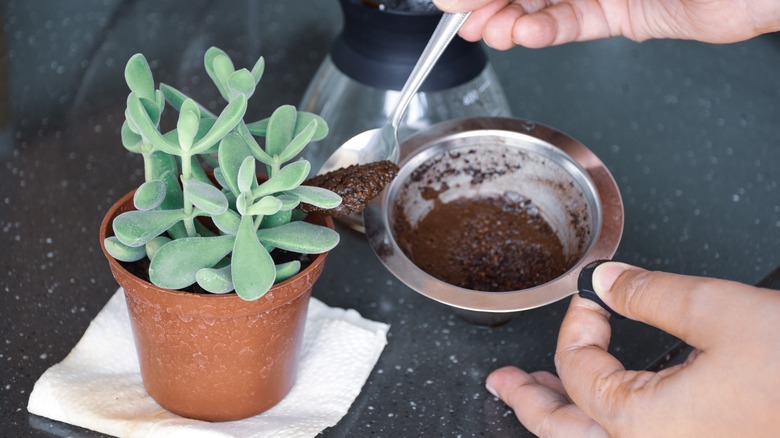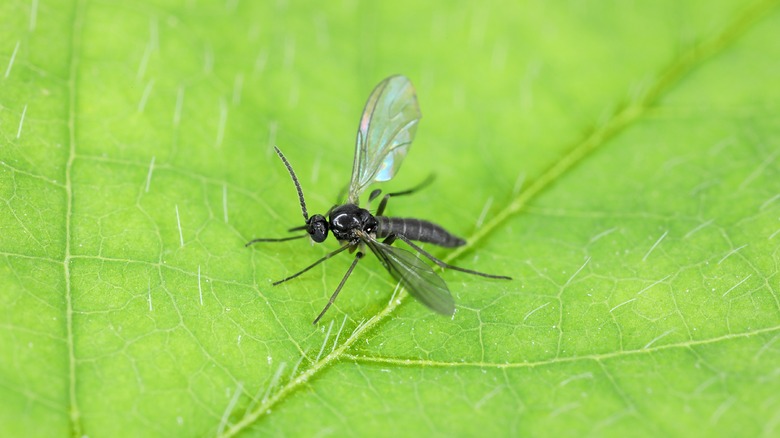Why Do People Use Coffee Grounds To Get Rid Of Fungus Gnats & Does It Actually Work?
Fungus gnats — houseplant parents know these guys well. Once these pests move into plant soil, it feels impossible to get rid of them. They invade your home by sneaking in through openings or by hitching rides on plants people bring in from outdoors. What are fungus gnats? Often mistaken for fruit flies, these similar-looking insects don't have a sweet tooth. Rather, they live off of fungus and organic material in soil, especially if it's damp. These pesky bugs don't bite, but they are annoying and can eat away at plant roots. Can coffee grounds rescue your plants in the same way they rescue you in the morning? There's a mix of mostly anecdotal, and a sliver of professional, advice on the matter, but not much information exists about whether this remedy is effective against fungus gnats.
So, let's get down to brass tacks: How are people getting extra mileage out of coffee grounds against fungus gnats, and does it work? By either layering dry, used coffee grounds on the soil's surface or mixing it into the soil of houseplants, this additive supposedly keeps the bugs from laying eggs in the soil. The coffee ground-crust trick has shown up on lots of platforms, from forums to blog posts. Yet, there aren't many testimonials, if any, made by people for whom this has actually worked.
Are coffee grounds actually a fungus gnat opponent?
The professionals at U.K.-based lawn company Moowy recommend sprinkling a layer of fully-dried used coffee grounds over the fully-dried top layer of soil in an infested houseplant. Water the plant from the bottom of the pot, making sure to keep the top layers of soil and grounds dry. Supposedly, the coffee grounds keep adult fungus gnats from laying eggs in the soil. Other plant fans claim that it's coffee's smell that keeps gnats away. However, a number of gardeners share that damp coffee grounds that they didn't dispose of quickly enough attracted many, many more fungus gnats.
Knowing a bit about the fungus gnat life cycle may help you decide whether this trick is worth a try. During their 25-day existence, they only spend eight days zipping around as possibly egg-laying adults. Yet, they make the most of those eight days; the average female fungus gnat can lay up to 200 eggs in her short life above ground. The coffee remedy targets adult flies, and it may not do it well or at all. So, it may be better to focus on a remedy that targets the flies' earlier life stages or that fights fungus growth.
There's been evidence that cinnamon can keep fungus gnats out of your home. Studies have shown that the spice contains a compound that suppresses fungus growth and dissuades bugs from laying eggs in soil (via Molecules). If you want to save cinnamon for use in your kitchen, you can rid your houseplants of fungus gnats with a common bathroom staple: hydrogen peroxide. It's a cheap, safe, and proven way to squelch soil-dwelling larvae and pupae.

